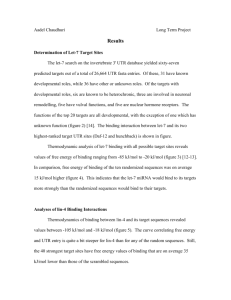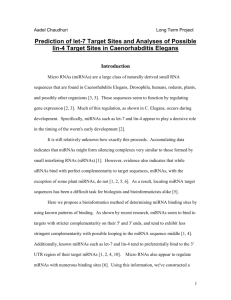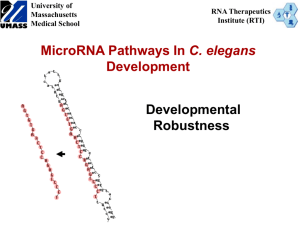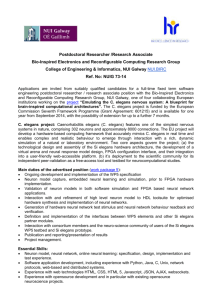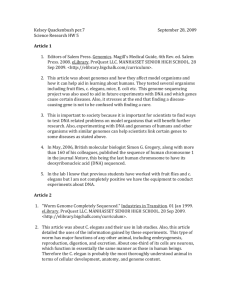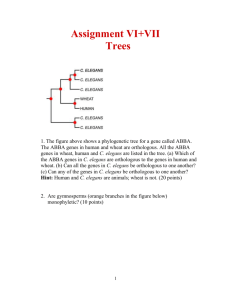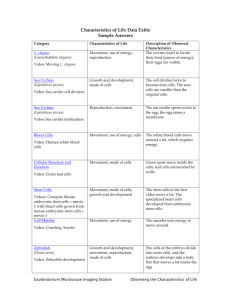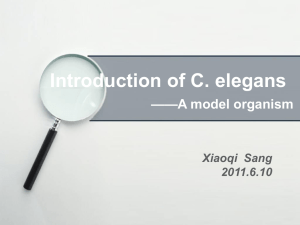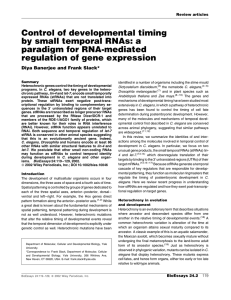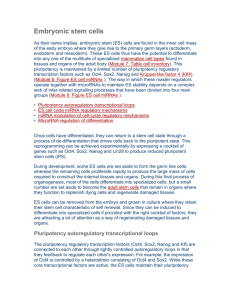LIN-28 co-transcriptionally binds primary let
advertisement
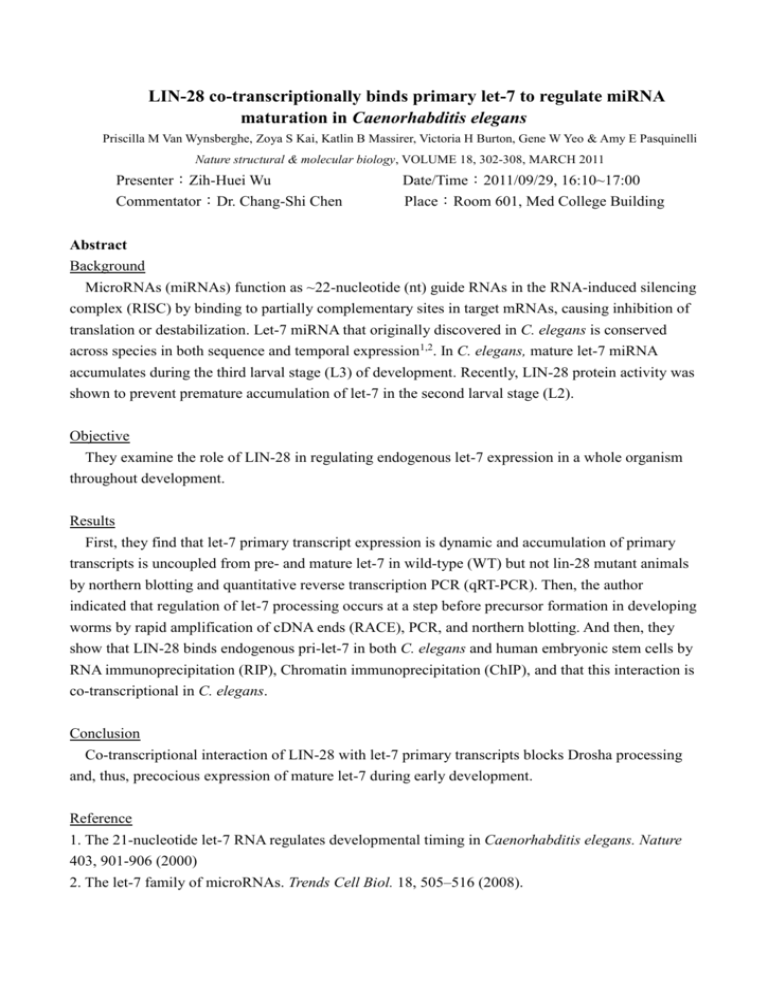
LIN-28 co-transcriptionally binds primary let-7 to regulate miRNA maturation in Caenorhabditis elegans Priscilla M Van Wynsberghe, Zoya S Kai, Katlin B Massirer, Victoria H Burton, Gene W Yeo & Amy E Pasquinelli Nature structural & molecular biology, VOLUME 18, 302-308, MARCH 2011 Presenter:Zih-Huei Wu Commentator:Dr. Chang-Shi Chen Date/Time:2011/09/29, 16:10~17:00 Place:Room 601, Med College Building Abstract Background MicroRNAs (miRNAs) function as ~22-nucleotide (nt) guide RNAs in the RNA-induced silencing complex (RISC) by binding to partially complementary sites in target mRNAs, causing inhibition of translation or destabilization. Let-7 miRNA that originally discovered in C. elegans is conserved across species in both sequence and temporal expression1,2. In C. elegans, mature let-7 miRNA accumulates during the third larval stage (L3) of development. Recently, LIN-28 protein activity was shown to prevent premature accumulation of let-7 in the second larval stage (L2). Objective They examine the role of LIN-28 in regulating endogenous let-7 expression in a whole organism throughout development. Results First, they find that let-7 primary transcript expression is dynamic and accumulation of primary transcripts is uncoupled from pre- and mature let-7 in wild-type (WT) but not lin-28 mutant animals by northern blotting and quantitative reverse transcription PCR (qRT-PCR). Then, the author indicated that regulation of let-7 processing occurs at a step before precursor formation in developing worms by rapid amplification of cDNA ends (RACE), PCR, and northern blotting. And then, they show that LIN-28 binds endogenous pri-let-7 in both C. elegans and human embryonic stem cells by RNA immunoprecipitation (RIP), Chromatin immunoprecipitation (ChIP), and that this interaction is co-transcriptional in C. elegans. Conclusion Co-transcriptional interaction of LIN-28 with let-7 primary transcripts blocks Drosha processing and, thus, precocious expression of mature let-7 during early development. Reference 1. The 21-nucleotide let-7 RNA regulates developmental timing in Caenorhabditis elegans. Nature 403, 901-906 (2000) 2. The let-7 family of microRNAs. Trends Cell Biol. 18, 505–516 (2008).
